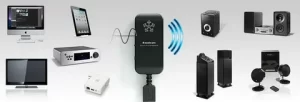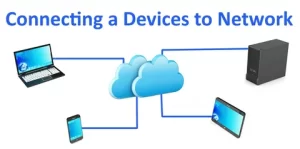Staying Connected, Staying Compliant: Navigating Wireless Device Regulations with H.B. Compliance Solutions
In today’s world, the proliferation of wireless devices is undeniable. From smartphones and smart home appliances to industrial sensors and medical implants, wireless technology has permeated almost every aspect of our lives. But with this incredible connectivity comes a crucial responsibility: ensuring these devices comply with stringent wireless regulations. As a local Arizona company, H.B. Compliance Solutions understands the importance of navigating this complex landscape, and we’re here to shed light on the vital role of wireless compliance in the modern connected device market.

Why is Wireless Compliance So Important?
Wireless compliance isn’t just a bureaucratic hurdle; it’s fundamental to the safe and responsible operation of the global wireless ecosystem. Think of it as the traffic laws for the airwaves – without them, chaos would ensue. Here’s a breakdown of the key reasons why wireless compliance is essential:
- Preventing Interference: Wireless devices communicate by transmitting radio waves. Without regulation, these transmissions could interfere with each other, leading to disruptions in critical services like emergency communications, aviation navigation, and even your Wi-Fi. Compliance ensures that devices operate within allocated frequency bands and power levels, minimizing the risk of interference.
- Ensuring Public Safety: Wireless devices emit electromagnetic radiation. While most devices operate within safe limits, non-compliant devices could potentially exceed these limits, posing a health risk to consumers. Compliance standards like Specific Absorption Rate (SAR) testing for mobile phones ensure that radiation levels are within acceptable boundaries.
- Promoting Interoperability: Compliance standards encourage interoperability between devices from different manufacturers. This means that your Bluetooth headset can connect to your smartphone regardless of the brand, creating a seamless user experience.
- Protecting National Security: Wireless technology plays a crucial role in national security and defense. Compliance regulations help to prevent the use of unauthorized devices and ensure that critical communication infrastructure remains secure.
- Facilitating Global Market Access: Most countries and regions have their own wireless compliance regulations. Compliance with these regulations is a prerequisite for selling wireless devices in those markets.
The Labyrinth of Wireless Standards and Regulations
Navigating the world of wireless standards and regulations can be daunting, even for experienced engineers. Here’s a glimpse into the key players and standards involved:
- Federal Communications Commission (FCC): In the United States, the FCC is the primary regulatory body responsible for overseeing wireless communications. They set the rules for radio frequency devices and ensure that these devices comply with specific technical standards.
- Innovation, Science and Economic Development Canada (ISED): Similar to the FCC in the US, ISED regulates wireless devices in Canada.
- European Telecommunications Standards Institute (ETSI): ETSI develops standards for telecommunications, broadcasting, and information technology within Europe. Their standards are often adopted by other countries as well.
- Conformité Européenne (CE) Marking: The CE marking indicates that a product complies with all relevant European directives, including those related to wireless emissions.
- International Electrotechnical Commission (IEC): The IEC develops international standards for electrical, electronic, and related technologies, including those used in wireless devices.
- Institute of Electrical and Electronics Engineers (IEEE): IEEE develops technical standards for a wide range of technologies, including Wi-Fi (802.11) and Bluetooth.
- Specific Standards: Beyond these organizations, numerous specific standards apply to different types of wireless devices, such as:
- Radio Equipment Directive (RED): A European directive that sets requirements for radio equipment.
- Electromagnetic Compatibility (EMC) standards: Ensure that devices do not emit excessive electromagnetic interference or are susceptible to it.
- SAR testing standards: Assess the amount of radio frequency energy absorbed by the human body from a wireless device.
How H.B. Compliance Solutions Helps Arizona Companies Navigate Compliance
As a locally based company in Arizona, H.B. Compliance Solutions understands the challenges that businesses face when introducing new wireless devices to the market. We offer a comprehensive suite of services designed to help you navigate the complexities of wireless compliance, ensuring your products meet all requirements and reach your target markets.
Here’s how we can assist you:
- Compliance Consulting: Our experienced engineers provide expert guidance on all aspects of wireless compliance, from initial product design to final testing and certification. We can help you identify the specific regulations that apply to your product and develop a comprehensive compliance strategy.
- Pre-Compliance Testing: We offer pre-compliance testing services to identify potential issues early in the development process, saving you time and money. This allows you to address any problems before submitting your device for formal testing.
- Full Compliance Testing: Our state-of-the-art testing facilities are equipped to perform a wide range of compliance tests, including:
- EMC testing: Measuring electromagnetic emissions and immunity.
- Radio Frequency (RF) testing: Evaluating the performance of wireless transmitters and receivers.
- SAR testing: Measuring the specific absorption rate of radio frequency energy.
- Safety testing: Ensuring that your device meets relevant safety standards.
- Certification Management: We can manage the entire certification process on your behalf, from preparing the necessary documentation to coordinating with certification bodies. We work with accredited labs and certification agencies worldwide to ensure your device is certified quickly and efficiently.
- Market Access Support: We assist with obtaining market access approvals for countries around the world. We stay up-to-date on the latest regulations and can help you navigate the specific requirements of each market.

Staying Ahead of the Curve: The Future of Wireless Compliance
The wireless landscape is constantly evolving, with new technologies and regulations emerging all the time. To stay ahead of the curve, it’s essential to partner with a compliance expert like H.B. Compliance Solutions. We continuously monitor the latest developments in wireless regulations and standards, ensuring that our clients are always prepared for the future.
Here are some key trends to watch in the world of wireless compliance:
- 5G and Beyond: The rollout of 5G technology is driving significant changes in wireless regulations, particularly in the areas of spectrum management and interference mitigation.
- Internet of Things (IoT): The proliferation of IoT devices is creating new challenges for compliance, as these devices often have limited resources and operate in diverse environments.
- Cybersecurity: With the increasing reliance on wireless technology, cybersecurity is becoming an increasingly important aspect of compliance. Regulations are being developed to address vulnerabilities in wireless devices and networks.
- Harmonization of Standards: Efforts are underway to harmonize wireless standards across different regions, making it easier for manufacturers to sell their products globally.
Conclusion: Partnering for Success
Wireless compliance is a critical component of bringing successful connected devices to market. By partnering with H.B. Compliance Solutions, you can ensure that your products meet all necessary regulations, avoid costly delays, and gain access to global markets—including specialized requirements such as Canada – Equipment Certification. We are committed to helping Arizona companies thrive in the connected world. Contact us today to discover more about our services and how we can assist you in navigating the complexities of wireless compliance. Let us help you stay connected, stay compliant, and stay competitive.
